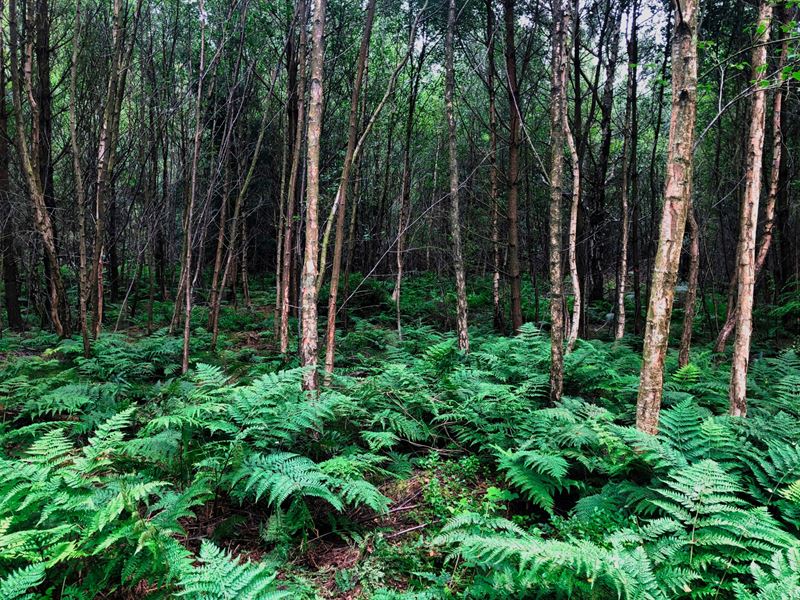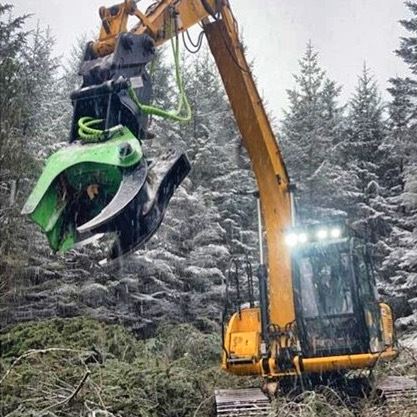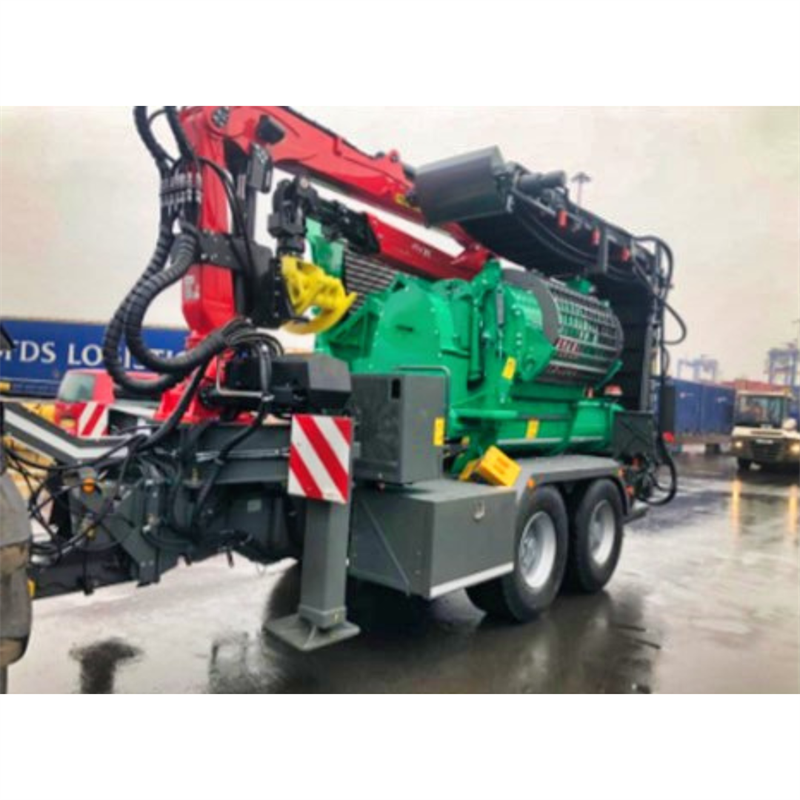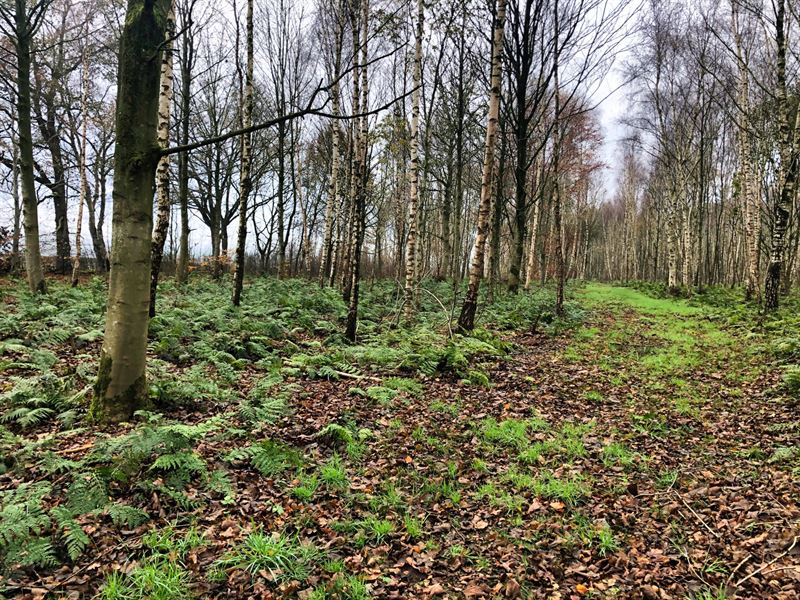Introduction
The Earl of Lonsdale’s Estates in partnership with The Lowther Estate Trust is the owner of the 400 ha Whinfell Forest which is located approximately five miles to the east of Penrith.
The Forest is comprised chiefly of productive conifers of differing species and is mostly managed by a continuous cover system where the intention is to maintain as many species and age classes on any given area at any time. For at least the last forty years this system has been successful and has produced a steady rate of return whilst maintaining a robust and diverse ecology which benefits, amongst other things, the red squirrels for which the Forest has been designated a reserve.
Although the Forest is primarily conifer, part of it is designated PAWS. This dates back to the 17th and 18th centuries when the whole of this area was open heathland with a tract of natural oak woodland sited where the soils were suitable. Part of the heath area was on deep peat which was used as a resource. This area is now a national nature reserve and SSSI.
It is silviculturally interesting that, despite the forest being managed as a commercial forestry enterprise, the native broadleaves continue to maintain a presence in many parts of the forest. In the interests of diversity and ecology and in carefully selected areas these natural incursions are encouraged to thrive. However, there are minor instances where, for one reason or another, birch has flourished to an extent where it has become a nuisance. This is illustrated in fig 1 where the self-seeded birch has developed at very dense spacing to the detriment of any desirable silviculture.

Fig. 1- Dense growth of Birch. Pre-shearing.
Until recently the costs of dealing with these instances has been prohibitive, largely due to the manpower involved coupled with the fact that there was no marketable product. This meant that these areas, although reasonable in ecological terms remained largely unproductive.
However in early 2024 the situation changed as the above two factors were reversed, i.e. engineering technology has seen the development of a tool which can cope with the nature of the product and there is a market requirement for the biomass which is produced from the operation.
The Operation
Early in 2024 discussions were started with A. W. Jenkinson Forest Products a nationwide forestry and wood products organisation which has one of its main processing sites very close to the Forest at Whinfell. The estate had regularly been processing brash and forest residues through this company and it was thought that there was an opening for harvesting biomass product from these overgrown birch stands. The company had also been developing a system of working with large manoeuvrable shears which are mounted on a tracked excavating machine. A small compact, accessible area was identified as a possible trial plot for the exercise. As well as the dense birch growth the vegetation consisted of Oak, Beech, Aspen, minor woody shrubs and Sycamore of which there were numerous new seedlings struggling to gain a foothold in the dense shade.
Once the area had been marked and surveyed for protected species the machine was moved onto site. Specifically this was a360* excavator JCB 140X with OMEF 400 shear. The operator was instructed to remove access racks at regular intervals which enabled him to reach into the crop from both sides and remove the selected produce. The working method was to shear the trees from the top down into lengths which were suitable for extraction and roadside chipping. These lengths were place in extraction piles at the edge of the access racks. The whole of the tree was used down to the very fine branches.
Regular site visits by the forest manager and A W Jenkinson’s contract management were undertaken to check on progress and re-brief the operator as necessary. Extraction was undertaken by the same tracked machine which was able to grab the large piles of produce and manoeuvre them to the roadside chipping area. Chipping was undertaken at regular intervals when the volume at roadside was sufficient to make it viable to engage the chipper. The chipper employed was a Jenz 583 chipper. The close proximity of the AWJ depot made it possible to undertake removal of chipped material in small loads.


Results
The exercise was deemed an overall success for multiple reasons-
- A compartment of dense unproductive birch with suppressed desirable species was turned into a useful broadleaf area with future potential.
- Previously suppressed desirable specimens were opened up and given the opportunity to thrive.
- Areas were created where future regeneration will be successful so that the whole compartment will be much more structurally diverse in terms of species and age class.
- All of the product was removed and the site left in a safe and accessible state.
- Good access racks were created which will facilitate future inspections and management operations.
- The exercise produced a useful return.

Figure 2. Compartment after shearing and extraction
The statistics are as follows...
Total area worked- 1.81 hectares
Total amount of biomass removed- 124.46 tonnes
Amount of product per hectare- 68.76 tonnes
Total return- £1057.91
Return per hectare- £584.48
The Estate has continued to work with A W Jenkinson and has undertaken other similar and equally successful operations. As a variation to the theme of converting unsustainable dense Birch areas we have experimented in 15 year old spruce crops where whole-tree chipping of early thinning removals is meeting the same objective of taking the first steps in the process of a continuous cover regime. Conditions have been created which are conducive to successful natural regeneration of desirable specimens so that the diversification of the selected compartments has begun at an early age with the benefit of early returns to the Estate.
This case study was produced as part of the Woodland Futures Project.